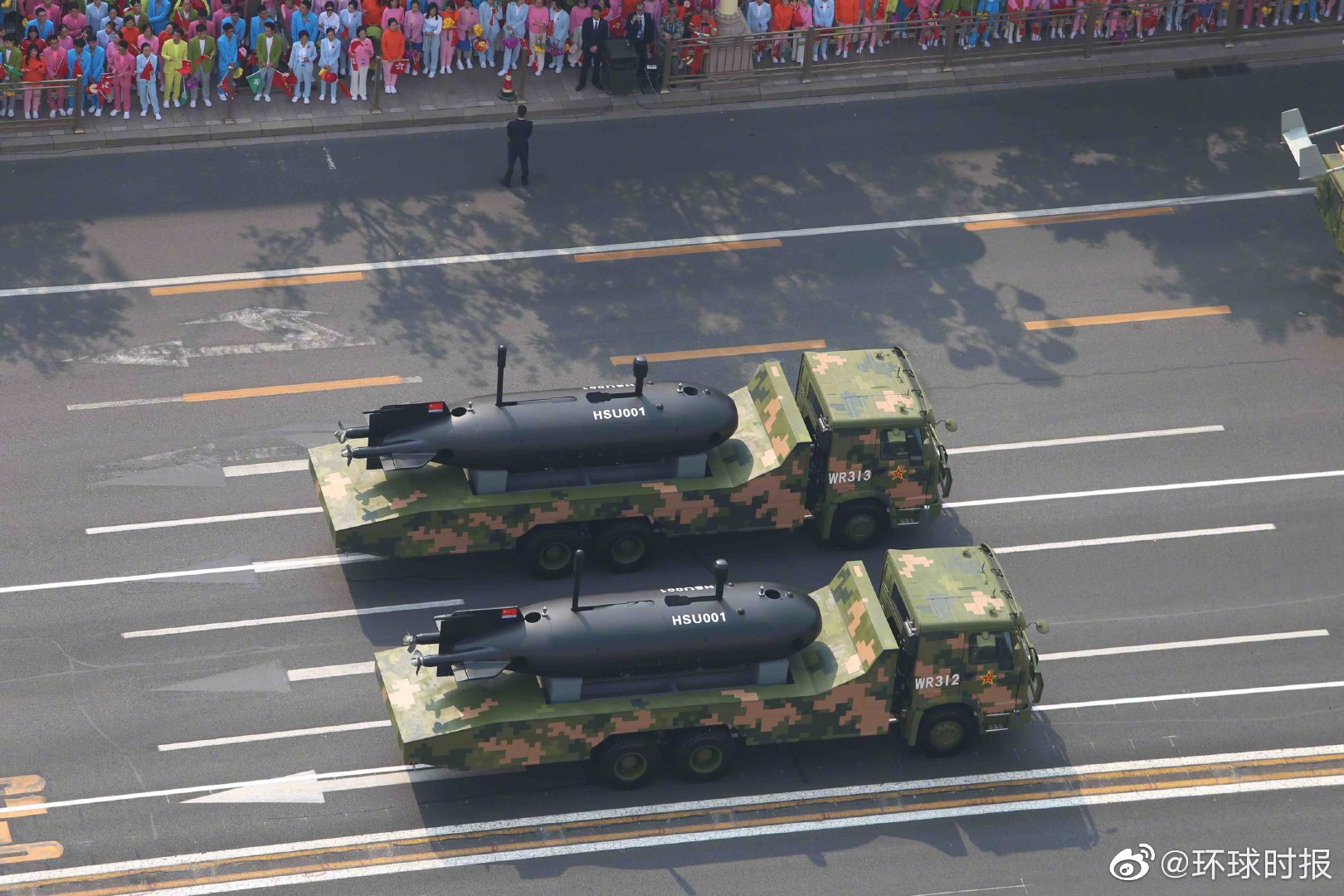China has reportedly unveiled the visuals of a new heavily armed extra-large uncrewed submarine at the NAVDEX 2023 defense exhibition in Abu Dhabi, UAE.
A recent report in Naval News, a publication focusing on global naval developments, said that an image displayed by the Chinese shipbuilding organization CSSC 705 Institute illustrates an XLUUV largely in line with some of the vehicles that have previously been seen in China on satellite imagery.
The report suggests China’s XLUUV (extra-large uncrewed underwater vehicle) is armed with torpedoes. The report added that this is a significant advancement in this area, and when combined with a large-scale development program, China may be able to outpace the West.
However, it has four torpedo tubes, indicating a load of offensive armaments, which Western designs have lacked until now.
Design-wise, the Chinese XLUUV is identical to the Boeing Orca used by the US Navy, but it has four torpedo tubes, implying an offensive capability.
***BREAKING***
First image of #Chinese extra-large submarine drone (XLUUV). Similar in size to #USNavy Orca, this design. Has torpedo tubes and, it appears, flank array sonar. Implies anti-submarine role (!!!)https://t.co/ARLOdYgNxN
— H I Sutton (@CovertShores) February 23, 2023
Nevertheless, the layout revealed by the Chinese company is unusual. It features a side structure consistent with flank array sonar. The design additionally shows the telltale doors for four torpedo tubes in the chin position, suggesting that the vessel can undertake anti-ship and anti-submarine missions.
The report noted that the French Oceanic Underwater Drone Demonstrator and the South Korean ASWUUV are two other large unmanned underwater vehicle concepts with sonars similar to the Chinese design. The Chinese model, however, is the first to include weaponry.
Although the picture revealed by the Chinese company at the expo is likely intended for export, it is unclear whether the program is connected to the PLA.
China’s Efforts To Develop Drone Submarines
China has been aggressively working to develop uncrewed underwater vehicles. The presence of drone submarines would significantly increase the PLAN’s ability to conduct ISR (intelligence, surveillance, and reconnaissance) missions.
The greater the size of the drones, the greater the range over which they can function. Moreover, XLUUVs might be used for transportation, minelaying, or even targeting enemy surface ships or submarines.
A few of China’s unmanned underwater vehicles (UUVs), including HSU001, were officially unveiled for the first time in October 2019 at a military parade to commemorate the 70th anniversary of the founding of the People’s Republic of China.
At the time, experts said the UUVs would be used chiefly for underwater intelligence and surveillance.
Lyle Goldstein, a Research Professor at the China Maritime Studies Institute (CMSI) at the US Naval War College, previously pointed out that such vehicles can expand “the PLA’s intelligence capabilities to the limits of the first island chain and even to the second island chain.”

According to Goldstein, China hopes to overcome the limitations of submarine warfare by developing highly effective UUVs and undersea artificial intelligence.
On satellite images in September 2022, two XLUUVs were sighted at a PLAN base in Sanya, Hainan Island. Sanya is one of the Chinese Navy’s most significant naval facilities, in charge of operations and deployments in the disputed South China Sea.
Despite other nations’ objections, Beijing insists it has historical rights to most of the South China Sea and has begun creating artificial islands to support those claims.
On the other hand, the US Navy awarded contracts worth $43 million to Boeing to produce four Orca XLUUVs in 2019. The vehicle’s primary function is to deploy undersea mines, but it is also capable of carrying a variety of payloads.
The US Navy introduced its first-ever Orca, a jumbo drone sub, in April 2022. One of its first tasks was to deploy Hammerhead mines, which will be tethered to the ocean floor and equipped with anti-submarine torpedoes.
Analysts predict that the Orca will soon be able to gather intelligence, engage in electronic warfare, and launch attacks like torpedoes aimed at surface ships.

Undersea drones can be far less expensive than submarines, allowing the US to develop many of them and deploy them at forward locations like Yokosuka, a US naval port in Japan, allowing them to react swiftly to any threats.
Washington believes that China would employ its sizable stockpile of missiles to obstruct the entry of US surface vessels in a conflict over Taiwan. Underwater drones will likely get beyond China’s protective screen and stealthily strike warships trying to land in Taiwan.
- Contact the author at ashishmichel(at)gmail.com
- Follow EurAsian Times on Google News




